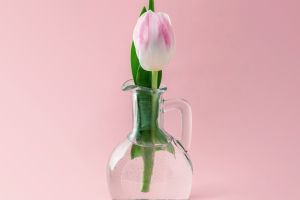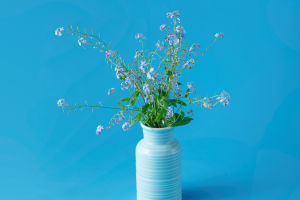Flower arrangement, or floral design, is a long-standing art form that uses plant materials such as flowers, foliage, and fruits to create beautiful artistic compositions through specific arrangements and combinations.
Among the various materials used in floral design, the tulip is a popular choice due to its elegant form and rich colors. This article will provide an overview of the history of flower arrangement, its basic principles, and the application of tulips in floral design.
History and Culture
Flower arrangement has a long history in Europe, particularly in Italy and the Netherlands during the Renaissance, where it experienced rapid development.
In the 16th century, the Netherlands became the center of tulip cultivation and trade, which further promoted the art of floral design. Today, flower arrangements have become a global art form, with different styles and techniques in various regions.
Basic Principles
The essence of flower arrangement is to create a visually harmonious and aesthetically pleasing effect by combining various floral materials. To achieve this goal, several factors must be considered:
1. Proportion and Balance: A floral design should maintain a visual balance, incorporating both symmetrical and asymmetrical elements, along with harmony in color, shape, and texture. Proportion refers to the relative size of the floral materials, the container, and the various parts within the overall composition.
2. Rhythm and Flow: Different shapes, sizes, and colors of flowers can create a sense of rhythm and flow, making the composition more dynamic and layered.
3. Focal Point and Visual Guidance: Floral arrangements typically need one or more focal points, which could be a particularly striking flower or a brightly colored area. Visual guidance refers to the use of the arrangement of floral materials to direct the viewer’s gaze, enhancing the overall effect of the composition.
4. Color and Contrast: Color plays a crucial role in floral design. The color scheme should consider harmony while also using contrast to enhance visual impact. For example, the diverse colors of tulips can create rich color variations and contrasts within a composition.
5. Texture and Material Selection: The textural differences between various floral materials can add depth and richness to a floral design. The smooth petals of tulips contrast with other rough or fuzzy plant materials, making the arrangement more interesting.
Tulips in Flower Arrangement
Tulips are an ideal choice in floral design due to their upright stems, graceful shapes, and rich colors. Here are some common ways tulips are used in floral arrangements:
1. Used Alone: Tulips are beautiful in their own right and can be used alone, especially in modern or minimalist floral arrangements. A bunch of single-colored tulips in a simple vase can highlight their color and elegance.
2. Paired with Other Flowers: Tulips can be paired with other flowers such as roses, lilies, and hyacinths. The soft curves of tulips create a contrast with the forms of other flowers, resulting in diverse layers and visual effects.
3. Vertical and Horizontal Combinations: The natural curvature of tulips is suitable for creating floral designs that combine vertical and horizontal elements. Vertical arrangements can utilize the height and curvature of tulips, while horizontal arrangements can take advantage of their naturally drooping shape, creating a dynamic visual effect.
4. Diverse Color Pairings: Due to the wide range of tulip colors, there is great flexibility in color combinations. Tulips can be paired with similar colors for a soft gradient effect or with contrasting colors for a strong visual impact.
5. Used as a Background Material: Tulips can also serve as background material to highlight other flowers with more prominent visual focal points. For example, in a floral arrangement dominated by roses, pale pink or white tulips can be used as a background to add depth to the overall composition.
Conclusion
Flower arrangement is a creative and expressive art form that combines the beauty of nature with human creativity.
Due to their elegant form, diverse colors, and rich cultural connotations, tulips hold an important place in floral design. With proper combination and care, tulips can add unique beauty and emotional expression to floral arrangements. Whether in traditional floral design or modern artistic creations, tulips continue to demonstrate their irreplaceable charm.


